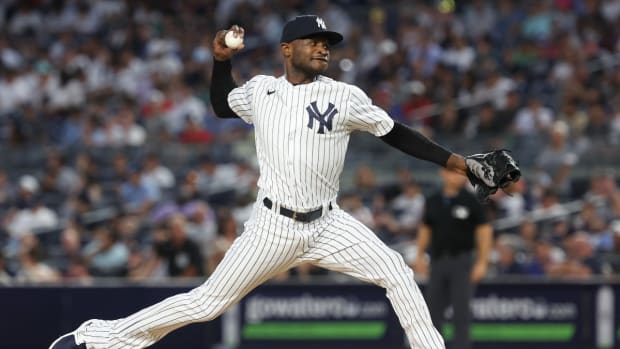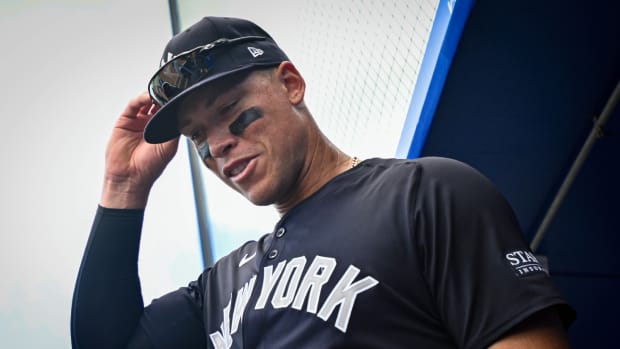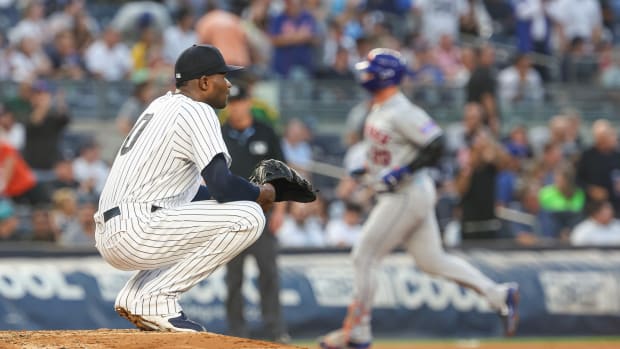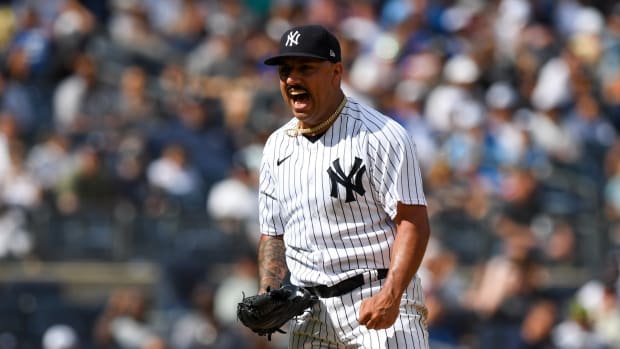Yankees’ Absence From Pre-Lockout Spending Warrants Skepticism
Teams across Major League Baseball took part in an unprecedented spending spree in the days leading up to the lockout, shelling out $1.7 billion.
Contenders and basement-dwellers alike opened their wallets, rushing to the marketplace before the expiration of the collective bargaining agreement, which perished Wednesday before midnight. The Rangers, losers of 102 games last season, paid half a billion for Corey Seager and Marcus Semien—and they didn’t stop there. The Blue Jays spent $241 million on starters José Berríos and Kevin Gausman. The still-maturing Tigers gave Javier Báez $140 million, the Mariners scooped up Cy Young winner Robbie Ray for $115 million, and the Twins extended Byron Buxton for $100 million. The Mets and Max Scherzer, meanwhile, shattered the record for average annual value, the highlight of an Amazin’ $254.5 million free agency tab.
The Yankees, meanwhile, re-signed Joely Rodríguez for $2 million. They also inked José Peraza to a minor league deal.
And that was that as far as their “notable” pre-lockout signings go. Outside of parting with Clint Frazier and a few others, it was mostly the moves the Yankees didn’t make—tendering Gary Sánchez and Luke Voit—that created buzz.
READ: Yankees Tender Gary Sánchez & Others, Avoid Arbitration With 3
While others—with typically smaller budgets—moved to get in on the last CBA before rosters froze, the Yankees stood pat. There could be multiple, justifiable reasons for this. Perhaps their desired targets, whether it be via trade or free agency, weren’t available or making decisions pre-lockout. Star shortstops Carlos Correa and Trevor Story are still unsigned; they may have wanted to see what the new world order looks like whenever the next CBA is settled. A different economic model for the sport could impact the value of a player a team is open to trading, such as Oakland 1B Matt Olson. Similarly, Yankees GM Brian Cashman and, more importantly, owner Hal Steinbrenner, may be waiting for new financial parameters.
That could explain why New York was inactive, and it should be noted that Wednesday night was not the deadline to make upgrades for the next season.
With that said, it raises an eyebrow that the Yankees sat on the sideline, especially when some of those who stormed the field don’t usually outspend them. Set against the backdrop of Steinbrenner’s recent adherence to the luxury tax threshold, his support for lowering it, and Steve Cohen’s best impression yet of the Yankees owner’s father, and it’s not a good look for a team that underperformed in 2021.
Some might say the lack of activity reinforces the notion that this Steinbrenner’s Yankees are cheap. That’s a reach; the team’s payroll is about $220 million when factoring in projected arbitration raises.
However, the Yankees have a superpower that they choose not to use sometimes. How and when Steinbrenner wishes to spend his money is his business, but that should be acknowledged if New York continues to preach its championship or bust mantra. If a team has holes—and the Yankees certainly do—it’s worth questioning that company line when the pits aren’t being filled. The pre-lockout stagnancy was only the latest example to invite such doubt.
At some point, a new CBA will come to fruition and transactions will resume. There will still be significant upgrades available for New York, a chance to catch up after others already did their shopping.
But the Yankees are going to have to spend if they want to improve—and prove to their fans that they’re all in.
For now, it’s fair to be skeptical as a quiet winter begins.
MORE:
- Yankees, Red Sox and Dodgers Among Teams in Touch With Free Agent Carlos Correa
- Where Do the Yankees Go From Here?
- Yankees Trade Rumors: New York Contacts Rangers About Isiah Kiner-Falefa
Follow Gary Phillips on Twitter (@GaryHPhillips). Be sure to bookmark Inside The Pinstripes and check back daily for news, analysis and more.




